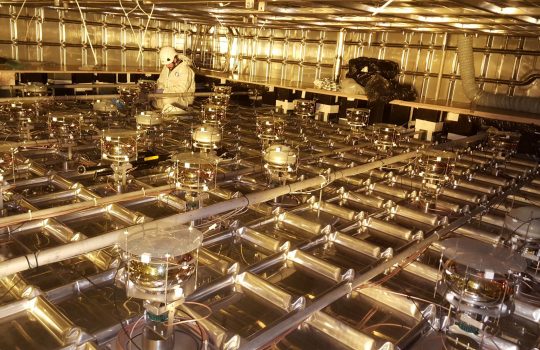Inner Workings: Physicists dig deep to seek the origin of matter
- Deep Underground Neutrino Experiment
- DUNE
- LBNF
- Long-Baseline Neutrino Facility
- neutrino
- Sanford Lab
- Sanford Underground Research Facility
- South Dakota
From the Proceedings of the National Academy of Sciences, July 9, 2019: The international Deep Underground Neutrino Experiment, hosted by Fermilab, will start running in 2026, studying an intense beam of neutrinos that starts at Fermilab and that will be measured in underground caverns in Lead, South Dakota. Fermilab scientists Deborah Harris and Sam Zeller talk about the mysteries of neutrinos and how DUNE will address them in this in depth article.

